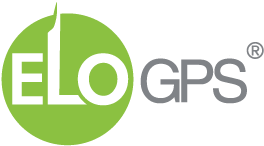In the fiercely competitive automotive industry, the adage “work smarter, not harder” rings more accurate than ever. Car dealership owners and managers continually face the challenge of maximizing their return on investment while striving to achieve the best possible results.
One crucial area where efficiency can make a significant difference is marketing spend. With precision targeting and innovative direct-to-customer tools like CarRx, dealerships can drive customer engagement while significantly reducing wasted efforts and expenses.
Conducting a Thorough Audit of Existing Marketing Efforts
The first step in streamlining your marketing spend is conducting a comprehensive audit of your existing efforts. This involves evaluating every marketing channel you use, from traditional ads and direct mail campaigns to social media and email marketing. Identify which strategies are delivering solid results and which are underperforming.
An audit should examine your campaigns’ reach, engagement, and conversion rates. Each customer’s cost-per-acquisition (CPA) is a crucial metric to focus on. If the CPA is too high for a particular channel, it might be time to redirect those resources elsewhere. An audit will provide valuable insights into the strengths and weaknesses of your marketing strategy and set the stage for informed decision-making.
Understanding the Importance of Targeted Marketing
The shotgun approach to marketing—casting a wide net in the hopes of catching a few prospective customers—is outdated and inefficient. Instead, focus on targeted marketing to reach the most relevant audience, increasing the likelihood of conversions.
For dealerships, this means focusing on individuals in the market for a new vehicle who have shown interest in your brand or are existing customers due for a service or upgrade. Targeting your marketing efforts ensures your message reaches those most likely to respond, increasing efficiency and lowering costs.
Implementing Direct-to-Customer Maintenance Reminders via CarRx
CarRx takes targeted marketing to a whole new level with direct-to-customer maintenance reminders. Instead of blanket marketing to all customers, CarRx allows you to reach out precisely when customers need maintenance, ensuring your message is seen and acted upon.
This predictive approach eliminates guesswork, reduces the risk of customers ignoring your messages, and ultimately leads to a higher engagement rate. It’s a win-win scenario—you increase customer satisfaction by providing timely reminders and save on marketing spend by targeting customers with high conversion potential.
The Benefits of Using Direct-to-Customer Marketing in Your Dealership
The benefits of direct-to-customer (DTC) marketing are immense, particularly for dealerships. Here are a few key advantages:
- Efficiency: DTC marketing, as CarRx provides, helps you utilize your resources optimally. Instead of spending on broad campaigns with low conversion rates, your efforts are concentrated on likely buyers or customers needing service.
- Precision: The predictive nature of CarRx allows you to target customers at the right time with the right message. This precision enhances customer experience and improves your dealership’s reputation.
- Loyalty: Personalized, timely communication, like maintenance reminders, shows customers you care about their needs and their vehicle’s upkeep. This approach fosters customer loyalty, translating to repeat business.
- Savings: By eliminating inefficient marketing strategies and focusing on high-conversion opportunities, you can significantly cut your marketing spend while achieving better or comparable results.
So, while maximizing marketing efficiency is a daunting task, it’s entirely achievable with the right strategy and tools. CarRx is one such tool that enables dealerships to revolutionize their approach, focusing on targeted, personalized, and timely communication. The outcome? Increased customer engagement, loyalty and substantially reduced unnecessary marketing expenses. Efficiency, after all, is key.

